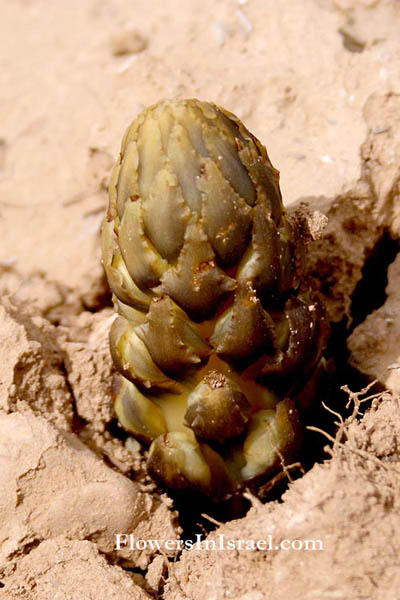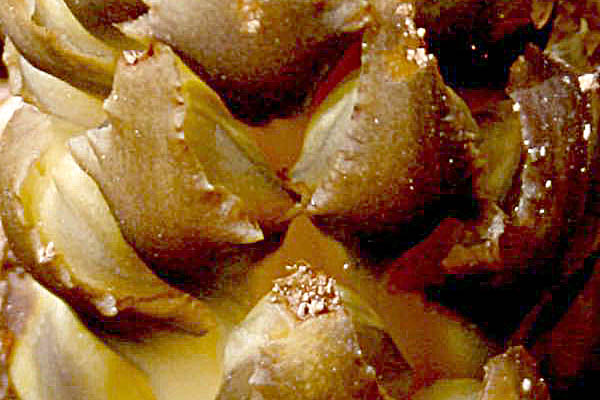Yellow broomrape, Desert Broomrape,
Hebrew: יחנוק המדבר, Arabic: هالوك , ترفاس اصفر
| Scientific name: | Cistanche tubulosa (Schenk) Hook.f. | |
| Synonym name: | Cistanche lutea Wight non Hoffmanns. et Link | |
| Common name: | Yellow Broomrape, Desert Broomrape, Saline cistanche | |
| Hebrew name: | יחנוק המדבר | |
| Arabic name: | هالوك , ترفاس اصفر | |
| Plant Family: | Orobanchaceae, עלקתיים |

|
| Life form: | Parasite | |
| Succulence: | Stem succulent | |
| Stems: | 30-60 cm tall, often with a purplish tinge, simple, erect, glabrous to puberulous, often broader (up to 5 cm) at base. Scales 2-3 cm long, 10-15 mm broad, triangular to broadly linear, acute | |
| Leaves: | Alternate, scale | |
| Flowers: | Yellow corolla | |
| Fruits / pods: | Capsules 20-25 mm long, ovoid-oblong, laterally compressed, beaked, many-seeded; seeds c. 1 mm long, pitted, dark-coloured. | |
| Flowering Period: | March, April | |
| Habitat: | Desert | |
| Distribution: | Semi-steppe shrublands, Shrub-steppes, Deserts and extreme deserts | |
| Chorotype: | Irano-Turanian - Saharo-Arabian | |
| Summer shedding: | Ephemeral |

Derivation of the botanical name: Cistanche, from Cistus and Orobanche, Greek anchein "to strangle" or anche "poison." tubulosa, tubulus, a small pipe; with small pipes. lutea, golden, saffron, orange-yellow.
|